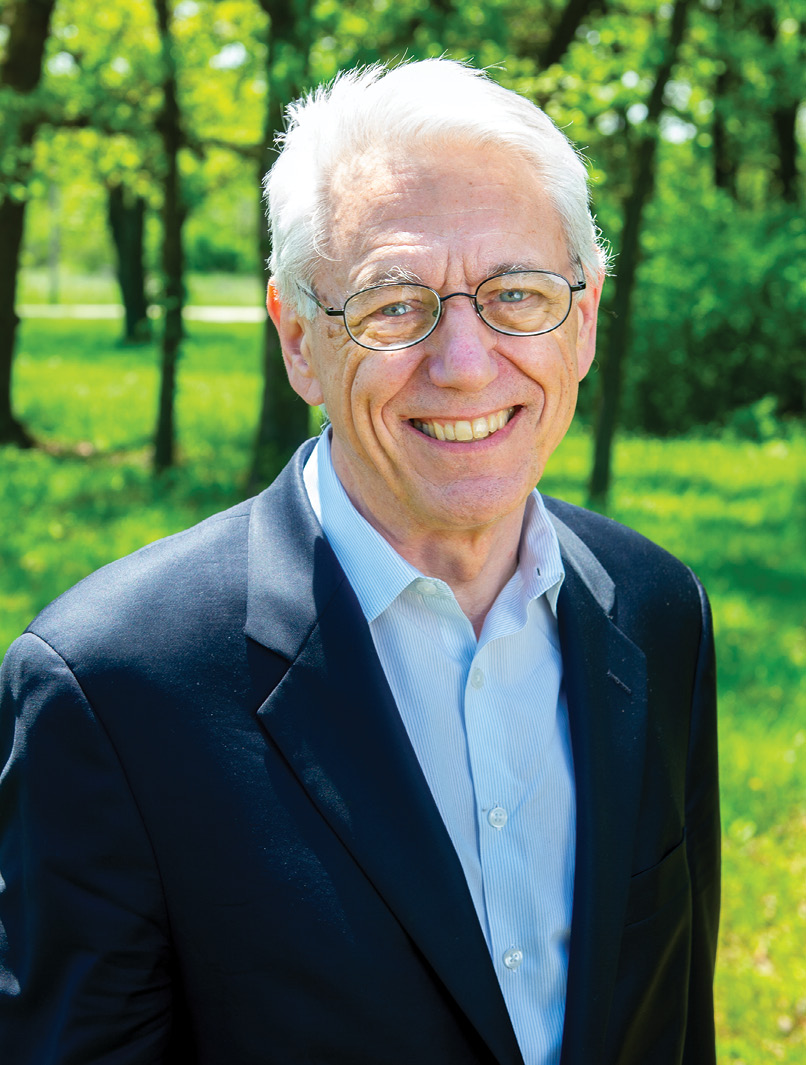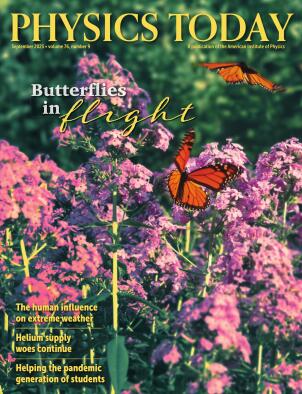George William Crabtree
DOI: 10.1063/PT.3.5313
George William Crabtree, a pioneering scientist and esteemed researcher at the US Department of Energy’s Argonne National Laboratory, passed away on 23 January 2023 in Chicago. He leaves behind a remarkable legacy that profoundly influenced the fields of superconductivity, magnetism, and energy-storage research.

George William Crabtree
ARGONNE NATIONAL LABORATORY

Born on 28 November 1944 in Little Rock, Arkansas, George had a curious mind and a passion for science. He began his journey at Argonne in 1964 as an intern from Northwestern University. After receiving a bachelor’s degree in engineering in 1967, he earned his master’s degree in physics the following year from the University of Washington in Seattle. George then went back to Argonne, where he focused his research on condensed-matter physics. In 1974 he earned his PhD in the subject from the University of Illinois Chicago and also became a staff physicist at Argonne.
George first set out to understand Fermi surfaces. He employed de Haas–van Alphen measurements to map the Fermi surface of transition metals, including platinum, palladium, niobium, and gold, and such mixed valence materials as LaSn3 and CeSn3. His characterization of niobium’s complete Fermi surface is still considered foundational to condensed-matter physics.
George turned to studying magnetic superconductors in the 1980s. He homed in on their electronic properties, especially whether ternary rare-earth compounds exhibited both superconductivity and magnetism. Among the other important work that cemented George’s stature in the field was his research into organic superconductors and itinerant f-electron behavior in heavy-fermion superconductors.
After Georg Bednorz and Alex Müller discovered high-temperature superconductors in 1986, George began research into vortex matter, and his work contributed greatly to the study of superconductivity. His analyses of the properties of vortices, which control type II superconductors’ electromagnetic behavior, proved instrumental in future applications. George and a devoted team of experimentalists and theorists looked extensively at the magnetic field and temperature phase diagram of the 90 K superconductor YBa2Cu3O7−δ with various types of induced defects, and they were able to show the melting of the vortex lattice and the ubiquity of the vortex liquid state.
George’s passion for energy research was equally profound. He took a broad approach to energy challenges and advocated for sustainable solutions to combat climate change. His tireless efforts in strategic planning for energy-related programs and research were highly regarded and influential. The reports he produced were the basis over the past decade for the DOE Office of Science’s basic-energy-sciences portfolio.
As director of DOE’s Joint Center for Energy Storage Research from 2012 until his death, George led groundbreaking experiments in battery science and technology. His vision and dedication to fighting climate change were evident in his pursuit of beyond-lithium-ion battery chemistries that are important for the transition from fossil fuels to carbon-free technologies. For George, combating climate change was personal, and that mission became a main focus of his work.
In 2010 George became a professor at the University of Illinois Chicago. The following year he started the university’s Summer Institute on Sustainability and Energy. A distinguished professor of physics and of electrical and mechanical engineering, he also served as director of the school’s Energy Initiative.
George received numerous awards over the years. For his decades-long studies on superconductivity, he was recognized in 1982 and 1998 with the University of Chicago Distinguished Performance Award at Argonne National Laboratory, and DOE honored him four times—in 1982, 1985, 1995, and 1997—with its Award for Outstanding Scientific Accomplishment in Solid State Physics. For his profound understanding of vortex matter, he earned the Kamerlingh Onnes Prize with Eli Zeldov in 2003. The American Institute of Aeronautics and Astronautics presented him with the 2022 Energy Systems Award for advancing next-generation energy systems that transition from fossil fuels to carbon-free technologies.
Beyond his scientific prowess, George will be remembered for his warm and steady demeanor, which guided important and challenging discussions to productive outcomes. He was always willing to lend a helping hand, and his leadership inspired those around him. Whether working in the lab, organizing camping events for colleagues, or enjoying cherished moments with his wife Barbara and close friends, George expressed a humility and curiosity that were truly inspiring.
More about the Authors
Paul Kearns. Argonne National Laboratory, Lemont, Illinois.
